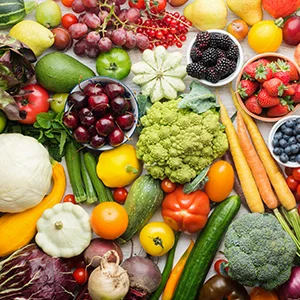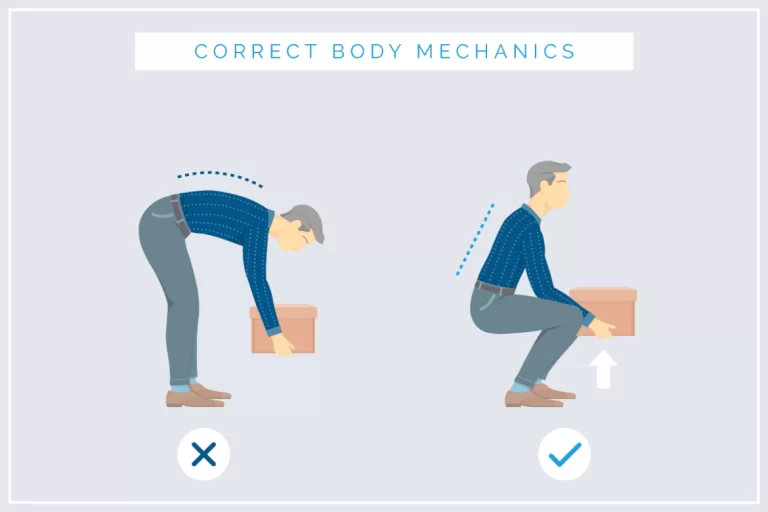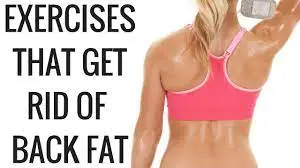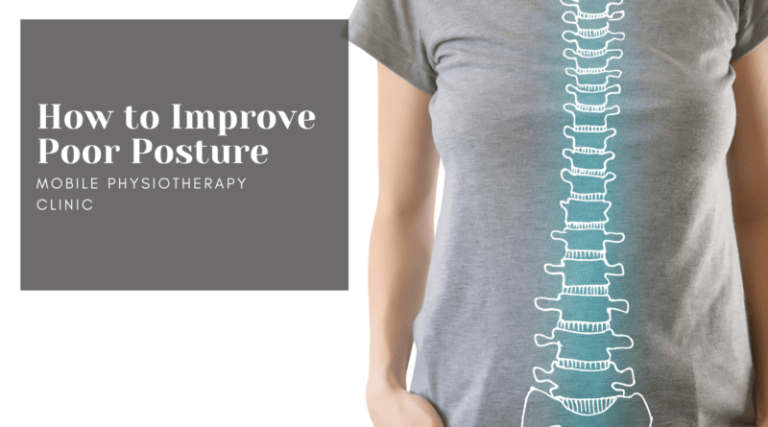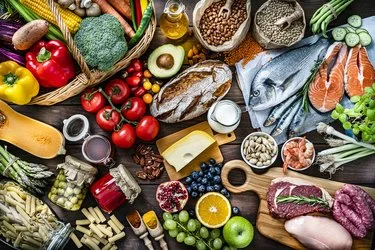Best Low-Calorie Foods to Help You Lose Weight and Improve Your Health
Introduction
Numerous meals low in calories have the potential to aid in weight loss. Include meals strong in protein or fiber, such as Greek yogurt and oats, if you want to reduce weight without sacrificing satisfaction.
Cutting calories might be one of the hardest dietary adjustments to undertake. In between meals, a lot of low-calorie items might make you feel famished.
There are, nevertheless, a lot of calorie-efficient, satisfying, and nutritional foods available.
Some examples of best low calories foods
Oats
You can benefit from including oats in your regular diet.
In addition to having little calories, they are also high in fiber and protein, which help you feel fuller for longer.
- Oat nutrition
Although a 1/2-cup (40-gram) portion of dried oats only has 154 calories, it contains 5 grams of protein and 4 grams of fiber, two nutrients that can significantly affect your appetite and hunger.
The oatmeal boosted feelings of fullness and decreased appetite and calorie consumption during the next meal, according to research involving 48 individuals.
Another small study found that eating instant and traditional muesli, as opposed to ready-to-eat morning cereal, significantly improved appetite control during a 4-hour period.
Oats, with their high fiber and protein content, help to enhance appetite control by decreasing hunger and increasing feelings of fullness.
Greek yogurt
You may include Greek yogurt in a healthy diet as an outstanding source of protein.
- Greek yogurt nutrition
A 1-cup (245-gram) portion of nonfat Greek yogurt has around 150 calories and 25 grams of protein, while the precise amounts vary across brands and flavors.
In one study, 20 women were compared to higher-fat snacking such as chocolate or crackers to see how a nonfat Greek yogurt snack influenced hunger.
Women who ate yogurt not only felt less hungry at supper than those who ate crackers or chocolate, but they also ingested 100 fewer calories.
In contrast to lower protein snacks, high protein Greek yogurt increased feelings of fullness and decreased appetite in a different trial including 15 women (6Trusted Source).
High in protein, Greek yogurt has been associated with reduced appetite, reduced calorie intake, and enhanced sensations of fullness.
Berries
While all berries are nutrient-dense, the ones with the highest fiber content and lowest sugar content are raspberries, strawberries, blueberries, and blackberries. They also all taste fantastic! You may use them as a well-balanced snack by adding them to smoothies, cottage cheese, or plain Greek strained yogurt. Berries are packed with antioxidants, vitamins, minerals, and fibre, and are a fantastic low-calorie food for fighting inflammation.
Blackberries were found to improve insulin sensitivity and fat oxidation in a short research including 27 males. They also contain a lot of polyphenols, which are a kind of antioxidant linked to heart-protective qualities. g Numerous research reviewed suggest that blueberries may also help to enhance insulin sensitivity and metabolic health.
The USDA lists the following nutritional information for one cup of raspberries: 64 calories, 0.8g fat, 0g saturated fat, 1.2mg sodium, 15g carbs, 8g fiber, 5.4g sugar, and 1.5g protein.
Soup
Soup is typically written off as little more than a light and uncomplicated side dish, yet it may be quite filling.
Soups made with broth have a high vitamin and mineral content and little calories. You may feel fuller for extended periods of time because of their high water content. According to studies, eating soup can aid in weight reduction, particularly if it is had before a meal. Be aware that cream-based soups might contain a lot of calories, so keep that in mind if you’re trying to lose weight.
Soups with a broth basis are not only nourishing and satisfying, but also typically high in nutrients. Simply choose reduced-sodium types whenever you can, and cook it yourself rather than ordering it from a restaurant or can, which usually has a high sodium content.
- Soup Nutrition
The nutritional value of a half-cup portion of condensed chicken noodle soup from a can varies depending on the brand and variety, but it generally has around 60 calories and 3 grams of protein.
Even though they contain the same components, some study shows that soups could be more full than solid dishes.
In one instance, 12-person research found that blended soup was superior to solid food or chunky soup in promoting fullness because it slowed the stomach’s emptying process.
In a second research with sixty participants, having soup before lunch reduced total caloric consumption by a remarkable 20%.
Remember that even while they are satisfying, creamy soups and chowders can be heavy in calories.
Choose a lighter soup that is made with broth or stock to cut calories and increase satiety.
Some soups are low in calories and can help you consume fewer calories overall by delaying the emptying of your stomach.
Eggs
Because they are high in essential nutrients and low in calories, eggs are incredibly nutrient-dense foods.
- Egg nutrition
About 72 calories, 6 grams of protein, and other vital vitamins and minerals may be found in one big egg.
According to studies, eating an egg first thing in the morning may increase feelings of fullness.
In thirty-person research, individuals who had eggs for breakfast rather than a bagel felt more satisfied and consumed 105 fewer calories throughout the course of the day.
A high-protein breakfast has been linked to fewer snacking episodes, a slower stomach emptying time, and lower levels of the hunger hormone ghrelin, according to other research.
Eggs are a great low-calorie breakfast option since they are high in protein.
Popcorn
Popcorn has a high fiber content, making it one of the most satisfying low-calorie snacks.
- Popcorn nutrition
One cup (8 grams) of air-popped popcorn contains just 31 calories, but it also contains 1.2 grams of dietary fiber or up to 5% of your daily fiber requirements.
Fibre not only helps you feel fuller by slowing down your digestion, but it also helps to stabilize blood sugar.
Furthermore, compared to many other common snack meals, popcorn can improve sensations of fullness and help suppress hunger.
In fact, researchers found that those who had 100 calories of popcorn felt fuller and more pleased than those who consumed 150 calories of potato chips in a study involving 35 participants.
Remember that these advantages only apply to air-popped popcorn, though. The calorie content of many ready-made variations is significantly increased since they are manufactured with a lot of additional fat and occasionally sugar.
Because popcorn has a lot of fiber, it can slow down digestion and help to stabilize blood sugar. Moreover, it enhances contentment and lessens hunger more effectively than other snacks.
Lean Meat
Low in calories and fat, lean meat—including lean cuts of red meat—is an excellent source of protein. An essential component of a nutritious and well-balanced diet might be lean meat. One explanation might be that protein helps you feel fuller for longer periods of time because it takes longer to digest than, for instance, refined carbohydrates. Blood sugar is also not significantly affected by lean protein. According to studies, including lean protein in your diet might also have heart-protective properties.
Not only are lean meats high in protein, but they are also complete protein sources because they include all nine necessary amino acids, which are not produced by the body and must be obtained through diet.
USDA nutrition information for three ounces of cooked chicken breast: 140 calories, 3 g fat, 0.9 g saturated fat, 72 mg cholesterol, 63 mg sodium, 0 grams of carbohydrates, 0 grams of fiber, 0 grams of sugar, and 26 grams of protein.
Chia seeds
Chia seeds, which are frequently regarded as a real superfood, are plentiful in fiber and protein for a small calorie count.
- Chia seed nutrition
Chia seeds include 138 calories, 4.7 grams of protein, and an incredible 9.8 grams of fiber every 1-ounce (28 grams) serving.
Particularly rich in soluble fiber—a kind of fiber that takes in fluids and expands in the stomach to make you feel full—are chia seeds.
Actually, according to some studies, chia seeds have the ability to absorb 15 times their weight in water, which helps them pass through your digestive system more slowly and keep you feeling full.
Two servings of chia seeds per day can help suppress hunger and cravings for foods rich in calories.
In research with twenty-four people, those who drank yogurt with chia seeds added felt fuller and less hungry than those in the control group. They also showed less desire for sweet foods.
Because of their high soluble fiber content, chia seeds might help you feel full all day.
Fish
Fish is high in heart-healthy lipids and protein.
- Fish nutrition
For example, a 3-ounce (85-gram) portion of cod has less than 60 calories and 13 grams of protein (26Trusted Source).
According to some study, eating more protein can lower ghrelin levels, which promote hunger, and decrease appetite.
Furthermore, fish protein could be particularly helpful in lowering appetite and hunger.
According to one research comparing the benefits of protein from beef, chicken, and fish, fish protein had the most influence on feelings of fullness.
Omega-3 fatty acids, which are essential for general health, are found in higher-calorie fish like salmon and mackerel, while lean fish like cod and halibut contain the fewest calories.
In addition to being a fantastic source of lean protein, fish is also low in calories and high in heart-healthy fats.
According to Sassos, the heart-healthy omega-3 fatty acids found in fish are responsible for many of the disease-fighting properties. These fatty acids have been shown to reduce inflammation, blood clotting, cholesterol, and triglycerides.
Fish is also a great source of iodine, selenium, vitamin D, and omega-3 fatty acids, among other elements that may support hormonal and metabolic health.
The USDA’s nutrition information for three ounces of cooked sockeye salmon is as follows: 143 calories, 0.8 g saturated fat, 6 g fat, 114 mg sodium, 54 mg cholesterol, 114 mg carbohydrates, 0 g fiber, 0 g sugar, and 22 g protein.
Cottage cheese
Cottage cheese is a delicious snack and a fantastic source of protein.
- Cottage cheese nutrition
About 28 grams of protein and just 163 calories may be found in one cup (226 grams) of low-fat cottage cheese.
Increasing your protein intake from foods like cottage cheese has been shown in several studies to reduce appetite and feelings of hunger.
Additionally, some studies indicate that consuming protein may increase feelings of fullness.
Additionally, research involving thirty healthy people revealed that the effects of cottage cheese and eggs on feelings of fullness were comparable.
Because cottage cheese is strong in protein, it might help you feel full and reduce hunger.
Arugula
Green rocket is a dark green vegetable belonging to the cruciferous family, which also contains Brussels sprouts, broccoli, and cauliflower. Cruciferous vegetables have strong anti-inflammatory properties, among their many other beneficial nutritional traits. In addition, they are rich in phytonutrients and antioxidants, and a strong source of vitamin K and folate.
Though regarded as a bitter green, rocket is often added to salads for its rush of spice. You may load up on it and feel good about it because a cup portion just has 5 calories.
When compared to other vegetables of its ilk, rocket offers a robust and peppery flavor profile, and most dark leafy greens are inherently low in calories.
USDA-recommended nutrition data (1 cup): 5 cal, 0.2 g fat, 6 mg sodium, 0.8 g carbohydrates. It contains 0.4 g fiber, and 0.6 g protein.
Potatoes
Because of their link with high-fat potato chips and french fries, potatoes are frequently written off as dangerous and unhealthy foods.
In actuality, though, potatoes may be substantial and a vital component of a diet high in nutrients.
- Potato Nutrition
While a medium baked potato with skin has 161 calories, it also has 4 grams of fiber and protein.
Indeed, boiling potatoes were shown to be the most satisfying dish in research assessing the impact of different foods on satiety, or fullness. They scored 323 on the satiety index, which is over seven times higher than croissants.
Studies on humans and animals suggest that potato protease inhibitors—compounds that can lower appetite and limit food intake to increase fullness—may be responsible for the filling effects of potatoes.
One of the tastiest meals on the planet is potatoes. They provide a certain chemical that may reduce food intake and appetite.
Cucumber
In the context of fruit theory, cucumbers belong to the same family as watermelons. With only 16 calories per cup, they are incredibly low in calories, so you can consume a lot of them before it becomes noticeable. In addition, they are a filling and low-calorie snack because they are composed of around 95% water. They may easily find a place in any salad and are highly adaptable. They can lend a pleasant flavor to water. You could pickle them!
Cut cucumbers in half lengthwise, then use a spoon to remove the seeds. To form a boat-like shape, leave the edge ¼ inch thick. Then, fill your cucumber boat with your preferred dip, such as hummus, baba ganoush, or other dips.
USDA nutrition information for half a cup of sliced cucumber: 8 cal, 0 g fat, 1 mg sodium, 2 g carbohydrates, 0.3 g fiber, 0 g sugar, and 0 g protein.
Legumes
Legumes, including beans, peas, and lentils, are quite satisfying due to their high protein and fiber content.
- Legumes nutrition
Cooked lentils give around 230 calories per cup (198 grams), along with 15.6 grams of fiber and over 18 grams of protein.
Legumes have been found to have a significant impact on appetite and hunger in several studies.
A high-protein lunch consisting of beans and peas was found to improve feelings of fullness and decrease appetite and hunger more than a high-protein supper consisting of veal and pork, according to research involving 43 young people.
A different analysis of nine research found that consuming pulses—a kind of legume—made participants feel 31% fuller than high-carb meals like bread and spaghetti.
Due to their high fiber and protein content, legumes have been linked to feelings of fullness and decreased appetite and hunger.
Watermelon
With its high water content, watermelon provides low calories and keeps you hydrated and satisfied.
- Watermelon nutrition
Diced watermelon, weighing 152 grams, has 46 calories per cup along with several important micronutrients, including vitamins A and C.
It has been demonstrated that eating foods with low-calorie densities, such as watermelon, has comparable effects to high-calorie densities on sensations of hunger and fullness. Furthermore, consuming fewer calories has been associated with foods having a lower calorie density.
In fact, substituting an equal amount of calories from fruit for oat cookies dramatically decreased calorie consumption and body weight in research involving 49 participants.
Asparagus
Vegetables that bloom include asparagus, which is available in green, white, and purple variants.
Asparagus comes in a range of healthful varieties that are packed with antioxidant and anti-inflammatory plant components, vitamins, and minerals.
Studies reveal, for instance, that asparagus has sulfur-containing chemicals such as asparagusic acid and phenolic compounds such as flavonoids.
Cooked asparagus, when measured in a cup (180 grams), contains just 38 calories. It is high in folate and vitamin K, making up 21% and 67% of the Daily Values (DVs), respectively.
Beets
Beets are colorful root vegetables with vibrant colors ranging from red to orange.
- They are rich in phytonutrients like phenolic compounds and betalains, which may have heart-healthy effects. Also, they are an excellent source of minerals like manganese and folate.
- Cooked beets (170 grams) make up a 1-cup serving that has 74 calories. It has 17% of the daily value for folate, and 12% of the DV for manganese.
Broccoli
Broccoli is a very healthy cruciferous vegetable. Research indicates that those who consume large quantities of cruciferous vegetables, such as broccoli. This may have a decreased risk of heart disease and several types of cancer.
Cooked broccoli, weighing 155 grams, provides more than 100% of the daily required quantity of vitamin C in just one cup (54 calories).
Overview
There are many delectable low-calorie dishes. The majority of them are fruits and vegetables that are rich in health-promoting elements.
But just because a food has fewer calories doesn’t imply it’s a better option than something with more calories. For your body to perform at its best and to make you feel your best. It requires enough calories every day.
Making meal selections only on the basis of calorie content is not a smart idea. Rather, consider selecting foods according to their nutritional density, which is the ratio of nutrients to calories in a food.
FAQs
What food is filling but low in calories?
Lean meats like turkey, salmon, and chicken breast, as well as fruits like berries and melons, and celery, and bell peppers. Also, leafy greens may be included in this category. That’s not all, though! Egg whites, whole grains, and plain yogurt are all considered low-calorie-dense meals.
Is a 1200-calorie diet low?
This is a restricted diet that calls for consuming no more than 1,200 calories each day. 1,200 calories may be too few for certain people, which can result in malnourishment. The guidelines on nutrition labels are usually based on a diet of 2,000 calories.
Which foods burn fat?
Fish and shellfish: 12 Foods That Boost Metabolism and Help Lose Weight. Potent Metabolism-Boosters: Omega-3 fatty acids and protein are plentiful in fish, including salmon, tuna, sardines, and mackerel.
Legumes (Also known as beans)
Chili Peppers
Lean Meats
Low-Fat Milk
Broccoli
Lentils
Oatmeal
How to eat for fat loss?
Consume a lot of soluble fiber.
Avoid eating a lot of trans fats.
Consume alcohol in moderation.
Consume a lot of protein.
Lower your degree of stress.
Eat little to no sugar-filled meals.
Engage in cardiovascular activity.
Limit carbohydrates, particularly processed carbohydrates.
Does lemon water burn fat?
Lemon Water’s Health Benefits for Losing Weight – Blog…
Lemon water can help weight reduction, speed up metabolism, support hydration, and encourage satiety. But when it comes to burning fat, lemon water is no more effective than ordinary water. Having said that, it is delicious, simple to prepare, and a low-calorie alternative to high-calorie drinks.
References
- 13 Low-Calorie Foods That Are Surprisingly Filling. Healthline. https://www.healthline.com/nutrition/low-calorie-foods
- Dietitians Suggest Few Foods That Will Fill One Up But Are Low in Calories. Good Housekeeping. https://www.goodhousekeeping.com/health/diet-nutrition/g41111495/low-calorie-foods/
- 33 Foods That Are Very Low in Calories. Healthline. https://www.healthline.com/nutrition/zero-calorie-foods

